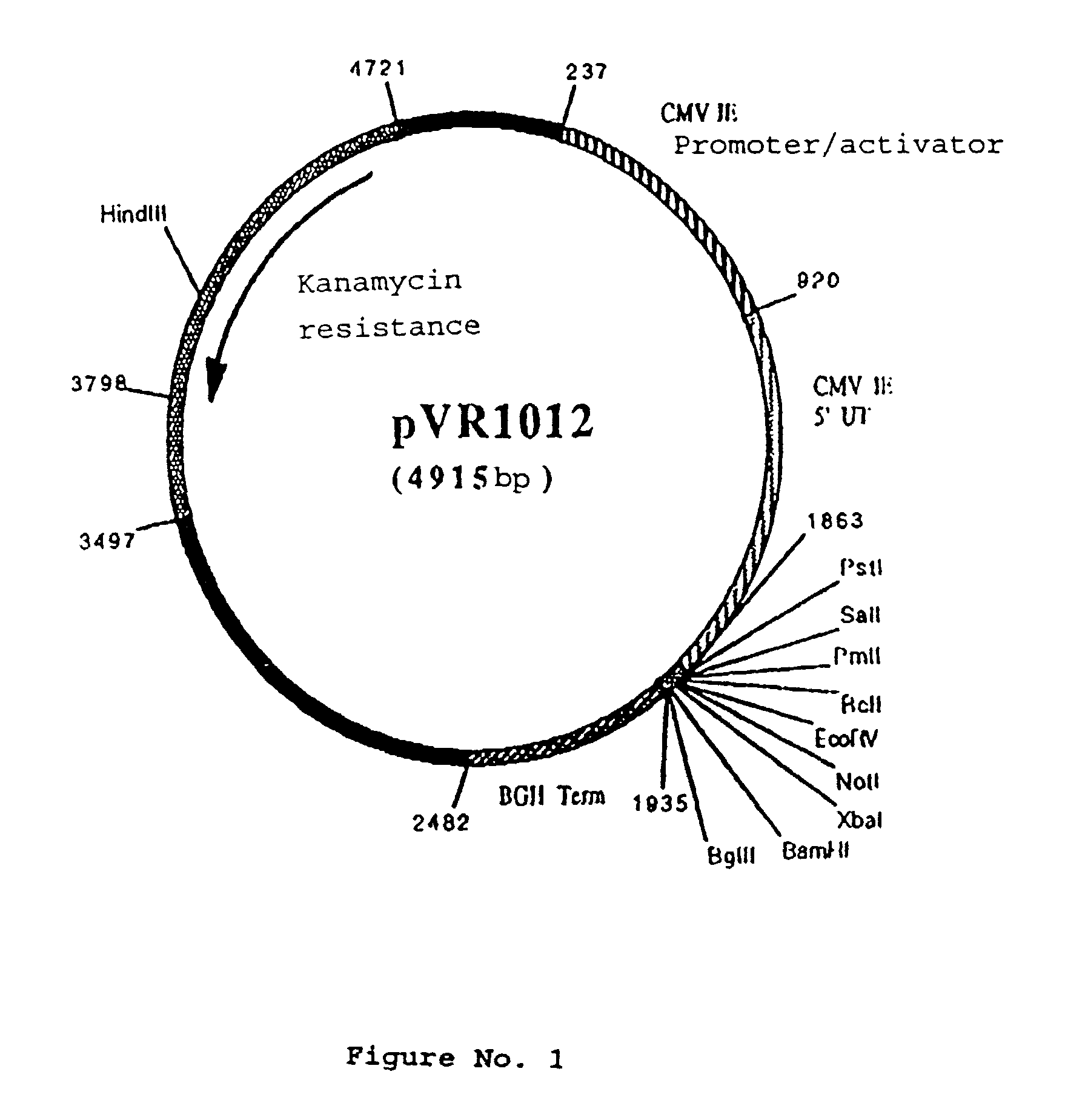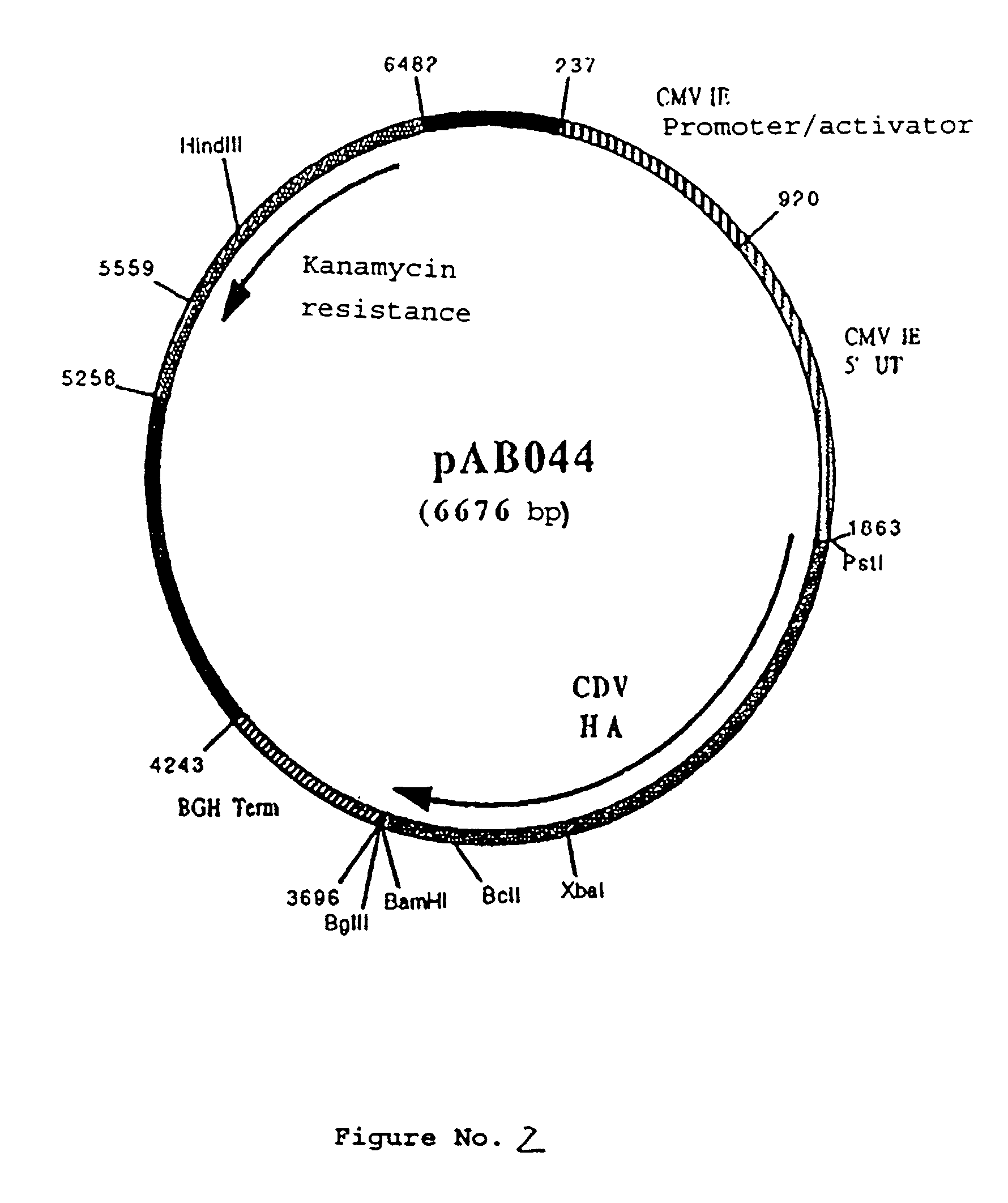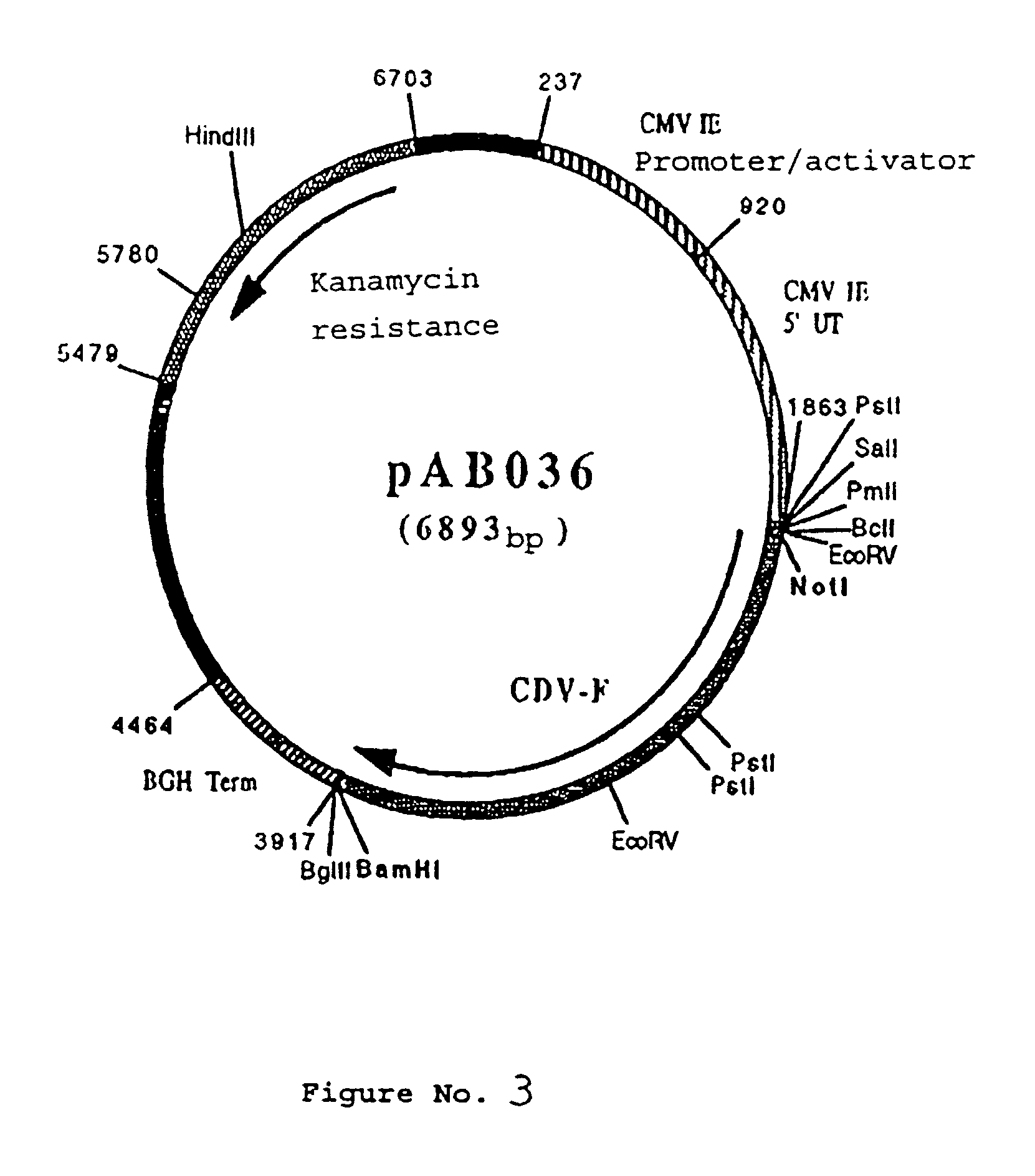Polynucleotide vaccine formula against canine pathologies, in particular respiratory and digestive pathologies
a polynucleotide and canine technology, applied in the field of respiratory and digestive pathologies, can solve the problems of compatibility between valencies and stability, the preservation of such combined vaccines and their safety, and the difficulty of controlling infection dog pathology
- Summary
- Abstract
- Description
- Claims
- Application Information
AI Technical Summary
Benefits of technology
Problems solved by technology
Method used
Image
Examples
example 1
Culture of the Viruses
[0071]The viruses are cultured on the appropriate cellular system until a cytopathic effect is obtained. The cellular systems to be used for each virus are well known to persons skilled in the art. Briefly, cells sensitive to the virus used, which are cultured in Eagle's minimum essential medium (MEM medium) or another appropriate medium, are inoculated with the viral strain studied using a multiplicity of infection of 1. The infected cells are then incubated at 37° C. for the time necessary for the appearance of a complete cytopathic effect (on average 36 hours).
example 2
Culture of the Bacteria
[0072]The Borrelia burgdorferi strains are cultured in appropriate media and according to conditions well known to persons skilled in the art. These conditions and media are in particular described by A. Barbour (J. Biol. Med. 1984, 57, 71-75). The extraction of the bacterial DNA was carried out according to the conditions described by W. Simpson et al. (Infect. Immun. 1990, 58, 847-853). The usual techniques described by J. Sambrook et al. (Molecular Cloning: A Laboratory Manual, 2nd Edition, Cold Spring Harbor Laboratory, Cold Spring Harbor, N.Y., 1989) can also be used.
example 3
Extraction of the Viral Genomic DNAs
[0073]After culturing, the supernatant and the lysed cells are harvested and the entire viral suspension is centrifuged at 1000 g for 10 minutes at +4° C. so as to remove the cellular debris. The viral particles are then harvested by ultracentrifugation at 400,000 g for 1 hour at +4° C. The pellet is taken up in a minimum volume of buffer (10 mM Tris, 1 mM EDTA). This concentrated viral suspension is treated with proteinase K (100 ug / ml final) in the presence of sodium dodecyl sulphate (SDS) (0.5% final) for 2 hours at 37° C. The viral DNA is then extracted with a phenol / chloroform mixture and then precipitated with 2 volumes of absolute ethanol. After leaving overnight at −20° C., the DNA is centrifuged at 10,000 g for 15 minutes at +4° C. The DNA pellet is dried and then taken up in a minimum volume of sterile ultrapure water. It can then be digested with restriction enzymes.
PUM
| Property | Measurement | Unit |
|---|---|---|
| volume | aaaaa | aaaaa |
| volume | aaaaa | aaaaa |
| volume | aaaaa | aaaaa |
Abstract
Description
Claims
Application Information
 Login to View More
Login to View More - R&D
- Intellectual Property
- Life Sciences
- Materials
- Tech Scout
- Unparalleled Data Quality
- Higher Quality Content
- 60% Fewer Hallucinations
Browse by: Latest US Patents, China's latest patents, Technical Efficacy Thesaurus, Application Domain, Technology Topic, Popular Technical Reports.
© 2025 PatSnap. All rights reserved.Legal|Privacy policy|Modern Slavery Act Transparency Statement|Sitemap|About US| Contact US: help@patsnap.com



